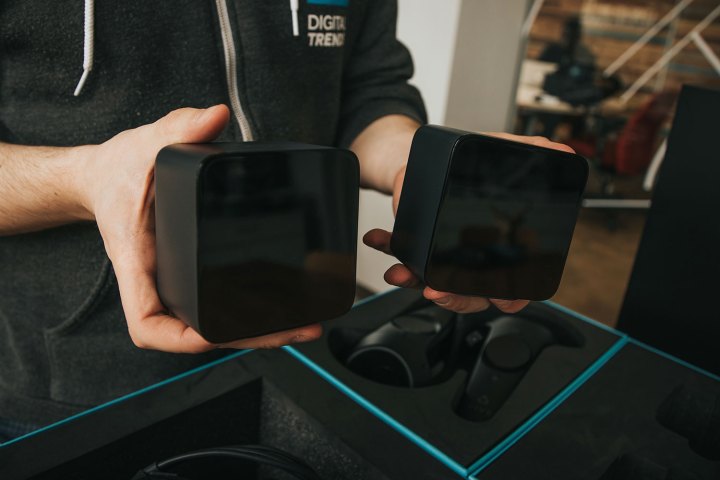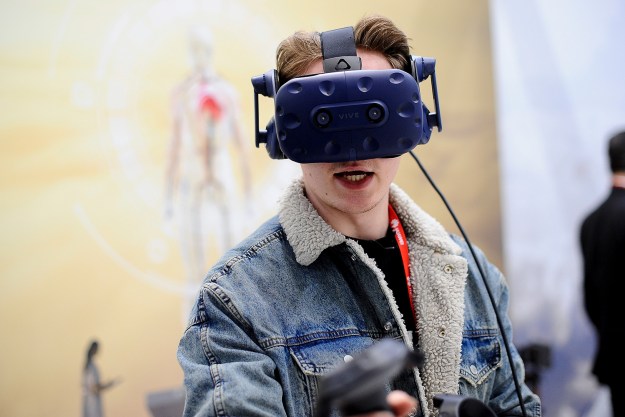
However it turns out that there’s a reason beyond shipping costs to ask for your region when visiting the official site. Although the site claims to offer “cables, controllers, headphones and more for your Vive,” the U.S. version only has replacement face cushions, a set of three different nose rests and a new USB extension cable.
Those are all well and good, but where’s the rest of it?
In Europe. Visiting the official storage pages for EU countries like France and Germany (as well as the soon to leave, UK) gives you a much wider selection. There are the above accessories, but also replacement options for the three-in-one headset cable, Lighthouse base stations, controllers, link boxes and face cushions.
It’s not clear why the EU has stock for all of these extras while the U.S. doesn’t, but it does give us an idea of what pricing will be like when those accessories do become available in the U.S. While there are likely to be some differences due to taxes, the controllers are listed at 150 euros ($165), the Lighthouse stations at 155 euros ($170) and the link boxes go for 35 euros ($39).
Although none of those items are cheap, they do at least represent a major component in the HTC Vive kit, so it’s understandable that they make up a reasonable portion of its price tag. However the one that’s most surprising is the price tag on the three-in-one HDMI/power/USB cable. That is currently priced at 46 euros ($51).
Although replacement faceplates, nose guards of difference sizes, and face cushion protectors are likely to be the most popular purchases, there is a reason to buy extra sensors and controllers beyond replacing broken accessories.
Adding more Lighthouse sensors could theoretically improve tracking throughout your roomscale space, making it less likely that a controller would lose tracking. No games support that yet, as far as we know, but selling them individually could give developers an incentive to do so. A third controller could come in handy too, as that’s how you can build a simple mixed reality set up for recording on a green screen.
Editors' Recommendations
- Apple’s new M2 MacBook Pro can’t handle the heat — should you still buy it?
- Everything HTC announced at ViveCon 2021: Vive Focus 3 and Vive Pro 2
- Two new ‘game-changing’ VR headsets could arrive at HTC’s ViveCon next week
- The best VR-ready laptops you can buy right now
- Oculus Rift vs. HTC Vive



